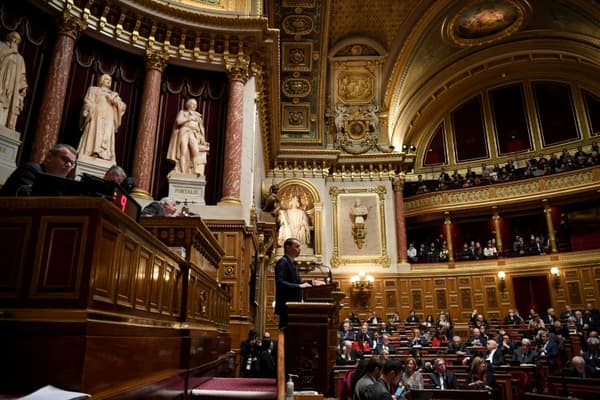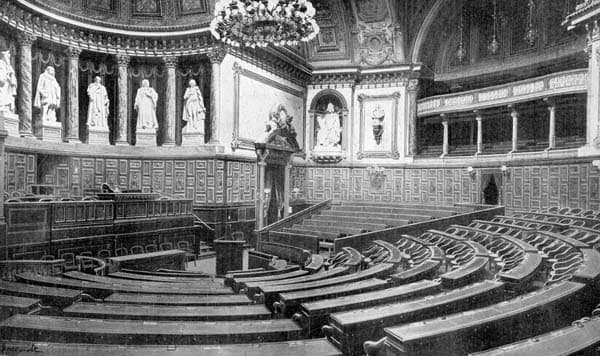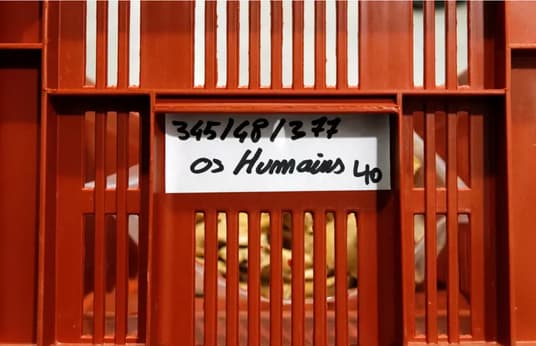The Senate, which renews almost half of these elected officials this Sunday, likes to play the discretion card. It must be said that the Luxembourg Palace, built in 1615 and officially a political institution since the 18th century, reserves some surprises and a turbulent history.
• A personalized armchair

A Senate official measures the waist circumference of each senator who enters the Luxembourg Palace. The objective: to be able to select the size of the seat that will accommodate you in the chamber. There are three sizes available depending on the body size of the chosen one.
“In the National Assembly one feels very bad. There it is very comfortable, very appropriate,” tells us an elected official who was a deputy and then a senator.
• A hairdresser at home

Among other benefits such as a restaurant for senators – who pay for their menu at a special price – and free mail delivery, senators have their own hair salon in the basement of the main building.
Accessible to everyone who was once in the Senate, some have preserved their habits there, like Jean-Luc Mélenchon, who frequented the address, hidden behind heavy red curtains, years after his departure from the Luxembourg Palace in 2010.
• A prison within the walls of the Senate

Known for its calm debates (which, however, turned bitter during the pension reform), the Senate housed a prison within its walls in 1899.
In the middle of a battle between monarchists, republicans and nationalists, Paul Déroulède, the founder of the League of Patriots and very close to General Boulanger, was arrested. For the author of the coup d’état, the administration is looking for a discreet cell while it organizes his trial.
So head to the Senate Library, where special dungeons are built into the walls to accommodate your detention and that of your loved ones. Very comfortable, these dungeons have olive green hangings, a white lacquered iron bed and an armchair upholstered with horsehair.
Paul Déroulède was sentenced to ten years of banishment within the walls of the chamber, before finally being pardoned a few years later.
• A Nazi flag and a bust of Hitler in the basements

In the 1930s and in full tension with Germany, the State decided to build a bunker in the basement of the Senate. The objective: to protect parliamentarians in the event of a bombing of Paris.
During the occupation, the Luftwaffe, the German air force, settled in the Luxembourg Palace, although it did not fail to considerably damage the premises during the battles for the liberation of Paris.
In the following years an inventory was made of objects left by the Germans, including gas masks, bicycles to operate a makeshift ventilation system, and school tables with the Third Reich eagle. But in 2019, The world reveals that a bust of Hitler and a Nazi flag are still preserved in the basement of the Senate, much to the dismay of the administration, which initially denies the situation, before acknowledging it.
Ten days later, Gérard Larcher promised “a census” of the objects related to the Second World War found within the walls of the Luxembourg Palace, stating that he wanted to donate them to the Museums of the Armies or the Liberation of Paris. Since then, no more news. Contacted by BFMTV.com, the Senate did not respond to our requests regarding the continuation of this procedure.
• Skeletons stolen in the middle of the night.

Built on the remains of Lutetia, the Senate and, especially, its basements are full of archaeological finds. In 1963 two skeletons were discovered, believed to be the oldest ever found in the entire capital. Enough to push the institution to want to start the construction of a glass building to expose these findings to the general public.
But two years later, the project failed. One of the skulls was found in pieces, the other had disappeared, despite a fence of several meters to protect them.
A few months later and given the reluctance of the city of Paris to pay for the exhibition of the skeletons, one of the local archaeologists decided to take them home at night, without notifying the Senate. Almost five decades later, they were found during an inventory at the department of architectural history and archeology in Paris.
Source: BFM TV

